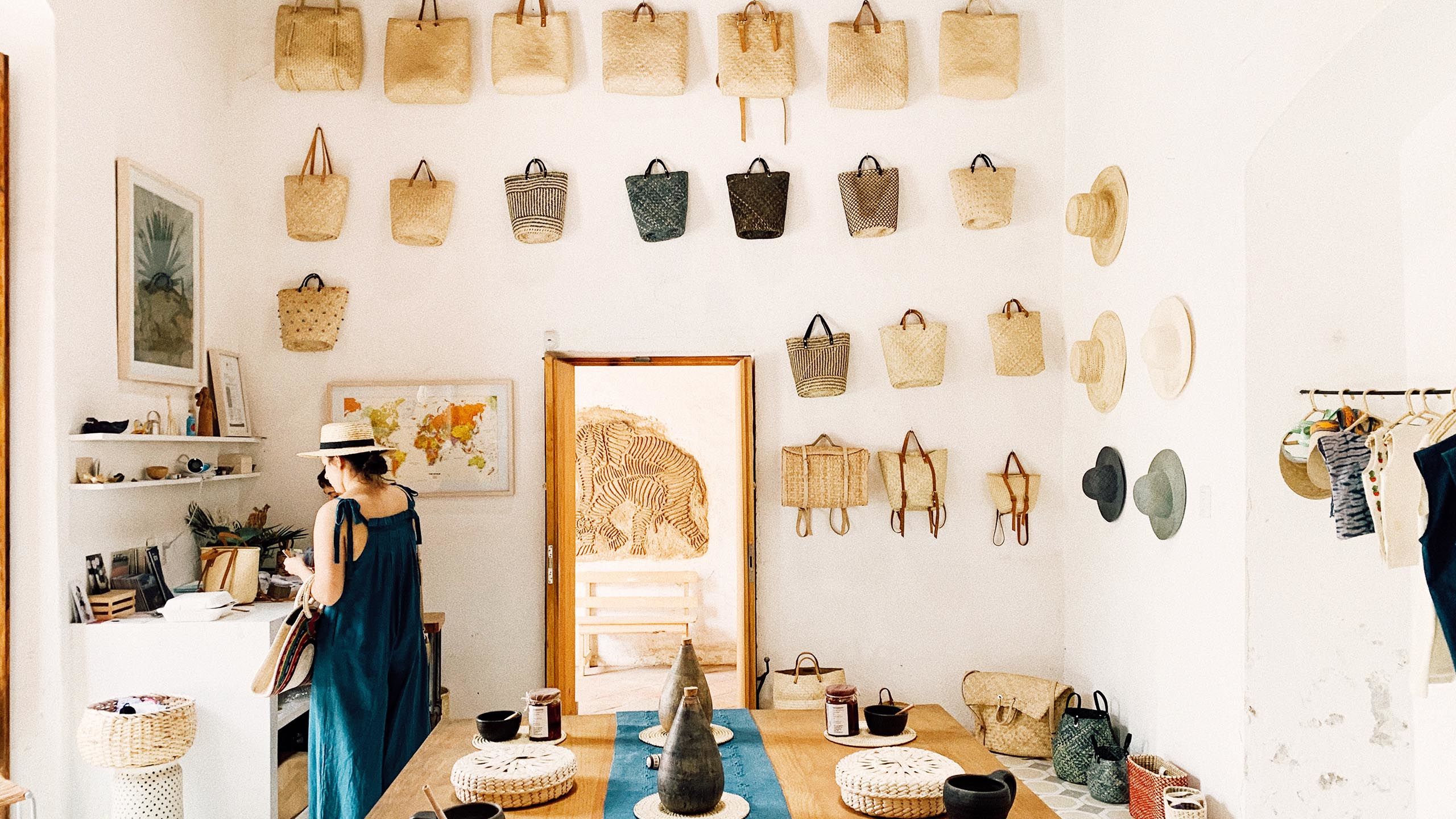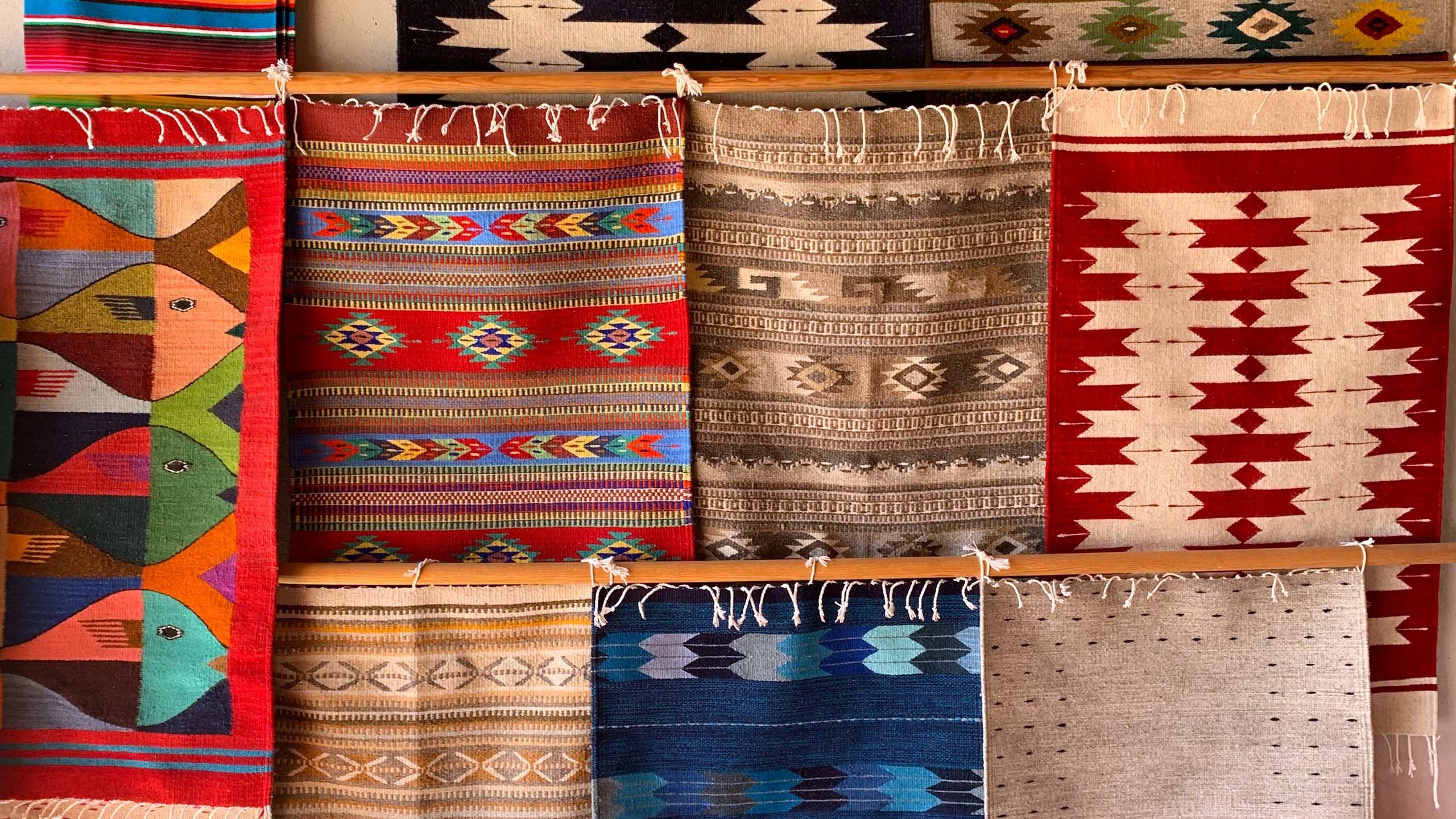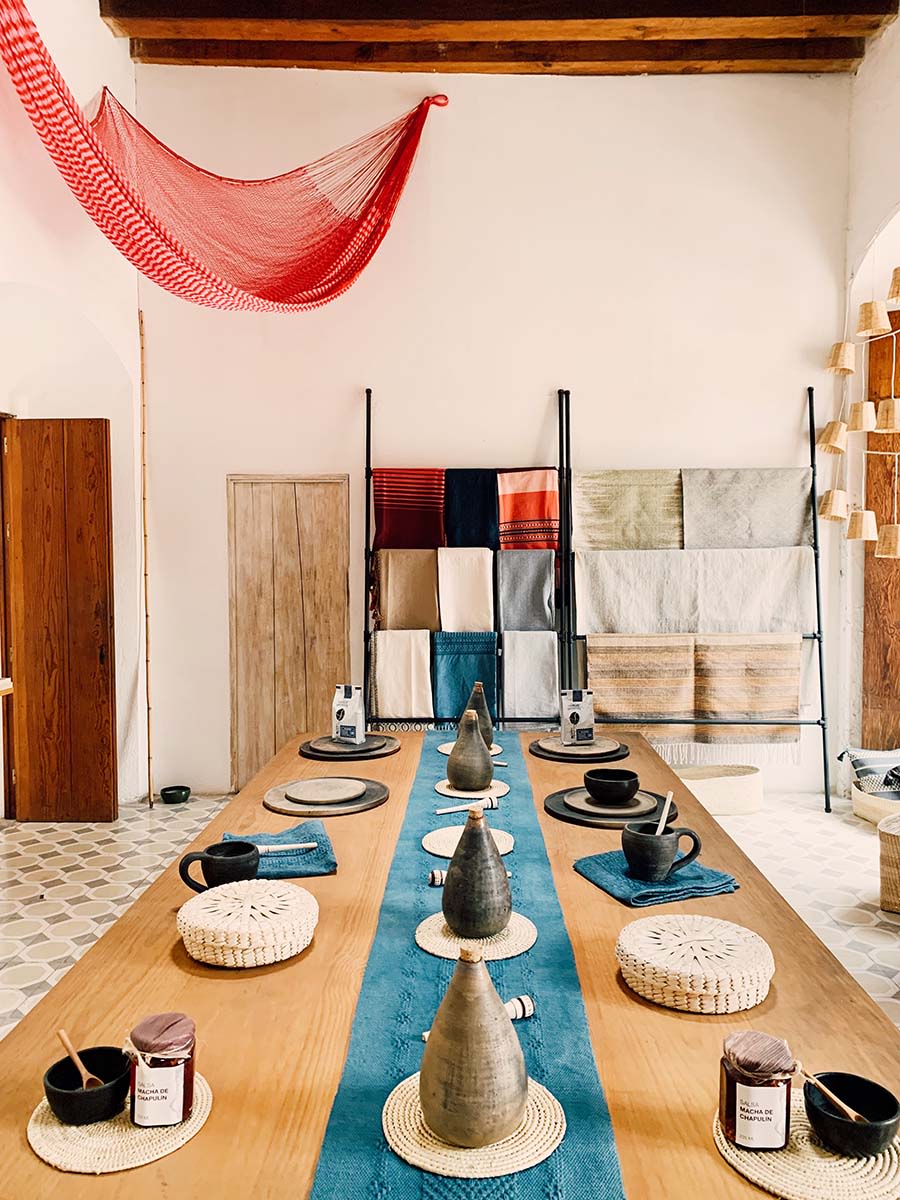Travel Guide: 3 Perfect Days in Oaxaca City, Mexico
An action-packed itinerary that showcases the best of colorful Oaxaca City, from mezcal and mole to otherworldly mineral pools

Oaxaca City, Mexico, has been around for centuries — and, in that time, its inhabitants have developed rich and complex flavors of culinary tradition; weaved intricate artisan goods; and built majestic colonial architecture and gilded churches.
The city has also changed hands many times, from the indigenous Zapotec people and then the Aztecs, followed by Spanish colonization under conquistador Hernan Cortes. Today, Spanish is the main language spoken throughout the city’s namesake region, but bystanders may catch snippets of dialogue in some other 16 indigenous languages still used throughout Oaxaca.
Recognized by UNESCO in 1987 (together with the nearby archeological site of Monte Alban, built by the Zapotec people), vibrant Oaxaca City has managed to remain under the radar for most. However, its rise in popularity seems inevitable due to an alluring bohemian vibe and a swelling number of stylish establishments, from boutique hotels outfitted in enviable decor to rooftop bars touting elaborate craft cocktails.
Here’s how travelers can fall for Oaxaca City in three days.
Day One
Settle into Oaxaca by becoming familiar with one of its most prominent claims to fame: mezcal. Visitors can get to know this smoky distilled spirit at nearly any restaurant or bar spanning the city’s 33 miles.
Fatigued from a long travel day (almost all flights from the U.S. require a layover in Mexico City International Airport), my friends and I wandered into Tobaziche, where mezcal is the common thread on the cocktail list.
The chic restaurant/bar is open for lunch, dinner and drinks, but the stand-out items are certainly the spicy mezcal creations — best paired with dense chicharron (pork crackling skin) dipped in a generous helping of chunky guacamole. Request a table on the upstairs balcony and try the Horchata Loca, a deliciously creamy blend of mezcal, condensed milk, mint liquor and spearmint. Or, for something light and refreshing, the Itzayana cocktail (with pineapple, passionfruit, cardamom, lemon, syrup and mezcal) is outstanding. Believe it or not: Each cocktail costs around $6 a pop.
Afterward, buzzed visitors can trudge onward to one — or more — of Oaxaca’s abundant mezcalerias that have proliferated over recent years. Most renowned (and popular) are Mezcaloteca, In Situ Mezcalería, Mezcalogia and Mezcalillera; if visiting during peak hours (usually upon nightfall), reservations are recommended.
Dinner, though, ought to take place at the stunning Los Danzantes, heralded as one of the top restaurants in Oaxaca on many a travel guide (including a No. 2 spot on TripAdvisor). I made my reservation several months in advance — and then felt validated as the hot spot bustled with activity while filling with tantalizing aromas. Along with courtyard seating, dim lighting and an overall sultry ambiance, Los Dazantes serves up excellent service and an array of artfully crafted dishes.

Dine on Mexican fusion cuisine at the renowned Los Danzantes. © 2019 Valerie Chen
Dine on Mexican fusion cuisine at the renowned Los Danzantes. © 2019 Valerie Chen
We loaded up on appetizers, ordering everything from the Holy Grass — a velvety, heart-shaped Herb Santa (Mexican pepper leaf) stuffed with quesillo cheese, goat cheese, miltomate (tomatillo) sauce and meco pepper — to the grilled octopus with an inky beet salad and nutty macha (a smoky olive oil-infused chili sauce).
Also on the table were do-it-yourself shredded duck tacos; a tangy yet spicy watermelon salad dressed with apple, cucumber, serrano pepper, worm salt and coriander; and coconut shrimp with a sweet-and-sour sauce and rice. If you can, save room for dessert — particularly the goat cheese flan, which is elevated with figs, bitter chocolate and honey.
Day Two
After sleeping off the indulgences of yesterday, rise early and don bathing suits before heading to the paradisiac Hierve El Agua, which requires a 1.5-hour scenic drive from Oaxaca City and a small fee (be sure to bring pesos for various tolls). Though most online sources state that the site’s hours are from 9 a.m. to 5 p.m., we were permitted into the area by 8 a.m., and thus had the natural phenomenon nearly all to ourselves.
Mineral deposits formed over thousands of years cascade down the side of Hierve El Agua’s limestone mountain — masquerading as two petrified waterfalls that are virtually white in color. Nearby are two mineral pools, said to have healing qualities, that are saturated with calcium carbonate, magnesium and sulfur.
Once a sacred place for the ancient Zapotecs, “Hierve El Agua” literally means “the water boils” in Spanish. In reality, though the springs do bubble in some areas, the water is a comfortable temperature for swimming. After taking a dip in the larger of the pools, whose infinity edge adds to its appeal, follow the signage to hike up about five minutes for a remarkable panorama of the lush valley and the second, smaller “frozen waterfall.”
On the way back to Oaxaca City, make a quick detour to Teotitlan del Valle (Teotitlan Village). The small weaving village specializes in lovingly made housewares including rugs of all shapes and sizes, dyed with natural sources such as cochineal (a type of insect), moss and indigo. It’s worth going directly into the village’s center for the biggest variety of options as well as the best rates.

Travelers can comparison shop for lovely handmade rugs at the center of Teotitlan Village. © 2019 Valerie Chen
Travelers can comparison shop for lovely handmade rugs at the center of Teotitlan Village. © 2019 Valerie Chen
More shopping awaits at Oaxaca City’s Mercado Benito Juarez, the largest and most prominent artisan and food market, where visitors will marvel at local craft goods sold at affordable prices (especially compared to within the U.S.) and imaginative designs. Trendy straw bags, well-made leather shoes, woven rugs and patterned textiles are all on offer here. There are also aromatic spices, shiny fruits and vegetables, mezcal and even chapulines, the typical Mexican dish of fried grasshoppers.
If the thought of stacked stall after stall seems overwhelming, check out Oaxaca’s top boutique shops for a curated selection of local goods. Run by a group of female artisans, Mujeres Artesanas de las Regiones de Oaxaca features pottery, tin work, embroidered blouses and more; proceeds from the well-priced items fully benefit their makers. Another must-stop is Lanii, which sells a highly curated — and subsequently more expensive — selection of lovely local goods, including a very Instagrammable wall of wicker and straw accessories.

Lanii offers a curated selection of Oaxacan goods. © 2019 Valerie Chen
Lanii offers a curated selection of Oaxacan goods. © 2019 Valerie Chen
At last, it’s dinner time: Multiple locals informed us that without having a meal at Casa Oaxaca El Restaurante, visitors to Oaxaca might as well have stayed home. Luckily, we had booked dinner here in advance (strongly recommended) and requested seating on the marvelous rooftop terrace.
Led by critically acclaimed chef Alejandro Ruiz, the restaurant reportedly launched Oaxaca’s gastronomic revival. Here, travelers will get dinner and a show — complimentary salsa, featuring chapulines, are made tableside with a mortar and pestle — as well as an authentic taste of the town’s specialty, mole. Especially fantastic dishes include rich and delectable wild mushrooms swimming in a yellow mole, as well as impossibly tender short ribs braised with avocado leaves and chilhuacle (a type of Mexican chile).
Day Three
Bread is the name of the game at Boulenc. An enticing smell of fresh-baked pastries and bread, made from scratch next door at the adjoining bakery, greets guests as soon as they step through Boulenc's doorway and peer into the open-air courtyard seating. All ingredients are sourced locally and only when in season; such care was evident in each bite of a spicy, vegetarian spin on the classic banh mi, featuring mushrooms, pickled carrots, chipotle harissa, roasted serrano pepper, avocado, cucumber, cilantro and onion.
Also popular at Boulenc are the beautifully plated gluten-free hot cakes — served with butter, citrus, red fruit sauce, basil, granola and banana — and the shakshuka with poached eggs, house-made bread and Lebanese cheese. Though international dishes are on the menu (including pizza baked in a wood-fired oven), guests will still find Oaxacan items such as cheesy, open-faced mollete sandwiches and, of course, mezcal cocktails.
Afterward, be ready for another feast, though this one will be for the eyes: Oaxaca City’s finest church and former convent, Santo Domingo de Guzman (also known as Templo de Santo Domingo). Intricately decorated in baroque style, it first began construction in 1575 under Dominican Order and took almost 200 years to be completed. Allow plenty of time to stroll its opulently gilded interior (supposedly 60,000 sheets of 23.5-karat gold leaf were used as adornment) as well as the adjoining museum exhibition that reveals a deep dive into Mexican history.
Behind Santo Domingo de Guzman is Ethnobotanical Garden of Oaxaca, a botanical garden that sits on the church’s former monastic grounds. Visitors here discover a sampling of Oaxaca’s extraordinary biodiversity, with the garden encompassing some 100 plant species — still only a fraction of the region’s actual endemic plant life. Of note are the sky-high rows of marginatocereus marginatus (organ pipe cactus) that will surely stop visitors in their tracks.
Guided tours are required for entry into the garden, and guests must arrive five minutes prior to the start time. Tours are typically held in Spanish, though English tours are available on Tuesdays, Thursdays and Saturdays. Ethnobotanical Garden of Oaxaca is open from 10 a.m. to 6 p.m. every day except Sunday.

Expendio Tradicion's dorado (mahi-mahi) ceviche with jicama and citrus © 2019 Valerie Chen
Expendio Tradicion's dorado (mahi-mahi) ceviche with jicama and citrus © 2019 Valerie Chen
As the grand finale for a three-day trip to Oaxaca City, try on Expendio Tradicion for size. The restaurant’s design is contemporary and moody, with black clay tiles, wood paneling, concrete flooring and exposed filament light bulbs dangling from the ceiling on red cords. Diners will love the popular pork tacos — so juicy and flavorful that we ordered an extra order to go — as well as the dorado (mahi-mahi) ceviche with jicama and citrus. The Huatulquillo cocktail with espresso and mezcal rounds out a top-notch pick-me-up.
www.boulenc.com
www.jardinoaxaca.mx
www.expendiotradicion.com
Good to Know
- Brush up on some basic Spanish before arriving in Oaxaca, and have a language translation app on hand. Not all restaurants have menus with English versions, and many locals have limited English-speaking proficiency.
- Oaxaca City is very walkable; we stayed in the center of Oaxaca and only explored on two feet. However, for points of interest outside the city, it is extremely affordable to hire a private driver. Our driver was Alfredo Gasga, who can be reached at ridewithme.oax@gmail.com; he was professional, kind and helpful.
- Top accommodation options in Oaxaca City include Hotel Casa Oaxaca, Hotel Azul de Oaxaca, Hotel Casa de Siete Balcones and Casa de Las Bugambilias.

